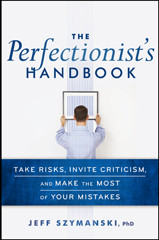Harvard Health Blog
How to become a better perfectionist

I often think of the well-known expression “perfect is the enemy of good” when I am endlessly rewriting an article to make it better (when it is already good enough) and in the process just make or even miss a deadline. But this old saying also reflects the dark view many people have of perfectionism. As a personality trait, it is seen as obsessive and at times pathological. People who are perfectionists may become so focused on setting a high standard for themselves that they live their lives as if graded constantly on a report card.
But perfectionism has a bright side, too. Desirable aspects of this personality trait include conscientiousness, endurance, satisfaction with life, and the ability to cope with adversity. This helps explain why some perfectionists become corporate leaders, skilled surgeons, or Olympic champions.
Dr. Jeff Szymanski, a clinical instructor of psychology at Harvard Medical School and executive director of the International OCD Foundation, believes it is possible to become a better perfectionist—by building on the strengths of this quality and learning to minimize its drawbacks. In his new book, The Perfectionist’s Handbook, he discusses this theory in greater detail and provides exercises people can try at home.
I recently talked with Dr. Szymanski about his book. He says a key step in becoming a better perfectionist is to learn how to turn mistakes into strategic experiments.
“Perfectionism is a phobia of making mistakes,” Dr. Szymanski says. “Perfectionists are hard on themselves, very self-critical. But in beating themselves up, they end up demoralizing themselves.”
In the video that accompanies this post, Dr. Szymanski outlines a process for turning mistakes into strategic experiments. “The core of all perfectionism is the intention to do something well,” Dr. Szymanski says. “The challenge is to think about doing it differently.”
But that is often where he encounters resistance to change. “As soon as I talk with someone who is a perfectionist about changing the way they do something, the defenses go up,” says Dr. Szymanski. “What I learned is that they thought I was telling them to lower the bar and be average. But that isn’t what I’m saying. The intention to do well isn’t the problem. What I’m challenging is the strategies that people use to achieve their goals.”
Suppose someone wants to become a better writer. The intention is laudable. But a perfectionist may approach this goal by editing copy excessively, or ruminating about a sentence that isn’t working before moving on to the next. These counterproductive strategies lead to missed deadlines and loss of confidence. Many perfectionists then dwell on their mistakes and failure to accomplish their goal.
As an alternative, Dr. Szymanski suggests stepping back from the task—in this case, writing—in order to come up with different ways to accomplish it. To return to the example above, the individual could try writing for 10 minutes without editing. By using this strategy, Dr. Szymanski says, people often find that their writing becomes better and smoother than when they stop and pick at it along the way.
And if one option doesn’t work, try another. Focus less on the mistake than on finding a solution. “Healthy perfectionists are problem solvers,” Dr. Szymanski says. “They make the most of their mistakes.”
For more information about Harvard Health Publishing’ new book, The Perfectionist’s Handbook, including ordering information, see /perfectionist.
About the Author

Ann MacDonald, Contributor
Disclaimer:
As a service to our readers, Harvard Health Publishing provides access to our library of archived content. Please note the date of last review or update on all articles.
No content on this site, regardless of date, should ever be used as a substitute for direct medical advice from your doctor or other qualified clinician.















